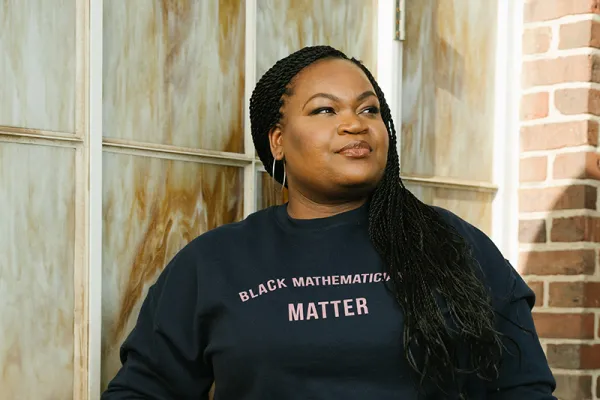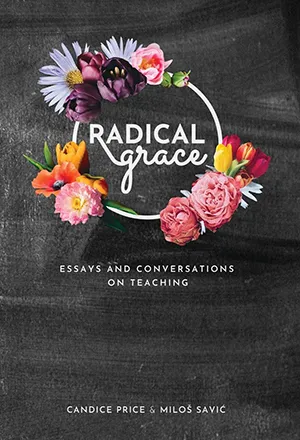‘Sink or Swim’ Doesn’t Cut It in the Classroom
Research & Inquiry
Math professor Candice Price approaches teaching with ‘radical grace’

Published March 23, 2023
When Candice Price’s mother learned to swim as a child in New York City, her father “taught” her by simply throwing his daughter into the Atlantic Ocean and hoping survival instincts would kick in. However, when it was time for Price to learn, her mother took a much different approach, signing Price and her siblings up for swimming lessons instead.
Price, now an associate professor of mathematical sciences and a 2022 Sherrerd Teaching Award winner, often reflects on those two approaches when she thinks about her own teaching style. In a discipline where many students suffer from “math anxiety,” she doesn’t want to be the kind of instructor who expects students to stay afloat on their own. In 2019, she began having conversations with Miloš Savić, a mathematician at the University of Oklahoma, about their respective pedagogical styles. What emerged was Radical Grace: Essays and Conversations on Teaching, which the two published last year.
Here, Price discusses the book, her educational philosophy, and how it fits into her vision for more equity in the world of STEM.

In your book, you write, “I wouldn’t teach this way if I wasn’t a Black woman in mathematics.” What are some of the experiences that have shaped your approach as an educator?
I didn’t feel like I had a lot of support from my math instructors. I had a lot of self-doubt when it came to being a mathematician because the folks around me didn’t look like me. I never had a Black female math professor. So, when I go into the classroom now as the instructor, I really think about my presence in that space and how I felt unsupported by some faculty. And it wasn’t like they were actively pushing me out. But there wasn’t a welcoming feeling. They didn’t take extra care, which I think we have to do in STEM classes—particularly in math classes, because of the trauma that folks have experienced around mathematics.
What does “radical grace” mean to you?
Radical grace is a two-pronged thing. One prong is that I trust my students. This means that if they need support from me in any way, it’s theirs. I encourage them to ask for what they need to be successful. It was hard for me to ask for help because I felt like I had to have a really good reason to need support. And the person who got to decide if my reason was good enough was someone who had no idea what my life was like. Often, faculty are like, “Well, is that a good enough excuse for me to give you more time?” And that’s not quite right or even fair. The second prong of radical grace is that I see my students as whole people. They are more than just the time they spend with me. We have to take a step back out of our own selves and think, “I trust this person to tell me something is going on with them and they need support” versus “Let me decide whether or not you are worthy of support or grace.”
What does that look like in the classroom?
It looks like a partnership. It looks like transparency. I share with students decisions I have made for the class, and I ask them, “How do we feel about that? Does that work?” I ask for feedback often because I think a lot of our students in general aren’t used to taking an active role in classroom decisions.
How does your approach to teaching fit into your broader work of increasing the visibility and amplifying the voices of women and people of color in STEM?
Academia was designed for a particular type of person: the cisgendered white male with a partner who stays at home and takes care of them. The population of educators doesn’t just contain that identity any longer. It’s far more diverse. But so many things haven’t changed in how we view “ability” and “hard work.” People who still believe that academia is a meritocracy ignore imbalances in schools and opportunities and put failure and success solely on the individual as opposed to also including systemic and historical speed bumps and walls. Thinking that everyone brings something to the table, everyone has a contribution, helps us change the environment as a whole. And it is more welcoming to diverse thought, diverse experiences, diverse cultures, and diverse groups of people.
What is it going to take to make radical grace the norm in academia?
People often say, “If you understand something, then you can teach it.” But it really is the opposite: “If you teach something, then you can understand it.” Teaching in the classroom is not just sharing knowledge but having a conversation with students, seeing what they already know, and building on that knowledge by receiving their feedback and adjusting the conversation. It is supporting their growth.
This story appears in the Spring 2023 issue of the Smith Alumnae Quarterly.
Photograph by Lynsey Weatherspoon